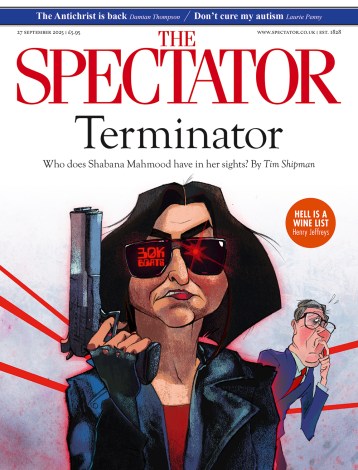How far can Neil Gaiman fall? The acclaimed author has been accused of sexual misconduct by eight women. One of his accusers, a woman who had been babysitting Gaiman’s child, alleges that Gaiman offered her a bath before joining her in the tub naked and assaulting her. Gaiman denies the allegations against him. ‘I’m far from a perfect person,’ he has said, ‘but I have never engaged in non-consensual sexual activity with anyone. Ever.’
Whatever Gaiman did or didn’t get up to in his private life, we should separate the art from the artist
Whether or not the allegations against Gaiman are true, the backlash has been swift. Gaiman’s upcoming creative projects have been cancelled. Netflix’s adaptation of his comic book The Sandman will end. A hotly-anticipated stage production of Coraline will not see the light of day. Publishers now refuse to touch Gaiman’s graphic novel manuscripts.
The collapse of his literary empire comes with immense collateral damage, not least for those employed on these various projects. But perhaps the unacknowledged losers in this sad saga are the children who won’t now find his work.
When I first encountered Coraline as a teenager, it gave me thrilled nightmares for weeks; I devoured Good Omens in one sitting. Beyond his writing, I became enamoured with the man. Gaiman has a fascinating backstory; born Jewish and raised a Scientologist, he was a precocious boy who could read at the age of four. As an adult, he left the Church and married musician Amanda Palmer, who struck my teenage self as fun and sexy.
With his dark semitic features, gentle manner, and large collection of leather jackets, Gaiman reminded me of the dads I used to see in my school playground at drop-offs. Over-familiarity with celebrities is almost always a mistake. Boy, did I make a huge one with Gaiman.
Whatever Gaiman did, or didn’t, get up to in his private life, we should separate the art from the artist. A reader would struggle to infer anything nefarious about his attitudes towards women from his work. The phrase ‘strong female lead’ is surely one of the most irritating in the English language, but Gaiman’s novels are chock-full with them. From spiky Anathema in Good Omens to clever Lettie in The Ocean at the End of the Lane, these characters are three-dimensional and thoughtfully drawn.
I envy young girls and boys who get to read Gaiman for the first time. Though they’ll now miss out on getting to watch his adaptations on stage or telly, I hope his books won’t disappear from school library shelves.
If we ‘cancel’ Gaiman, then other authors surely deserve a similar fate. Separating the art from the artist is not a new moral dilemma. But while adults have autonomy over what art they consume, cancelling a famous children/young adult writer is different, precisely because kids don’t have that same choice. Even if Gaiman is a creep of epic proportions, that’s not a reason to consign his writing to the shadows.
I attended a Jewish primary school in Hackney, east London, in the noughties where a number of pupils were also black and brown (there’s a significant Mizrahi population in the borough). The school library stocked the complete works of Roald Dahl and Enid Blyton.
Us kids somehow cottoned on that Dahl didn’t like Jews and that Blyton might have had some troubling views. We felt discombobulated, as children do when they learn that a grown up is flawed. It’s difficult to square how an adult can invent such lovely characters when they’re a decidedly unlovely person.
But our teachers were straight with us; they said that Dahl and Blyton were pillars of British literature, and that while they were not perfect people we’d be denying ourselves by not reading their books. Here we learned an important life lesson: that there’s no necessary correlation between cleverness and kindness. It’s a lesson I wish I’d taken to heart when discovering Gaiman as a teen.







Comments